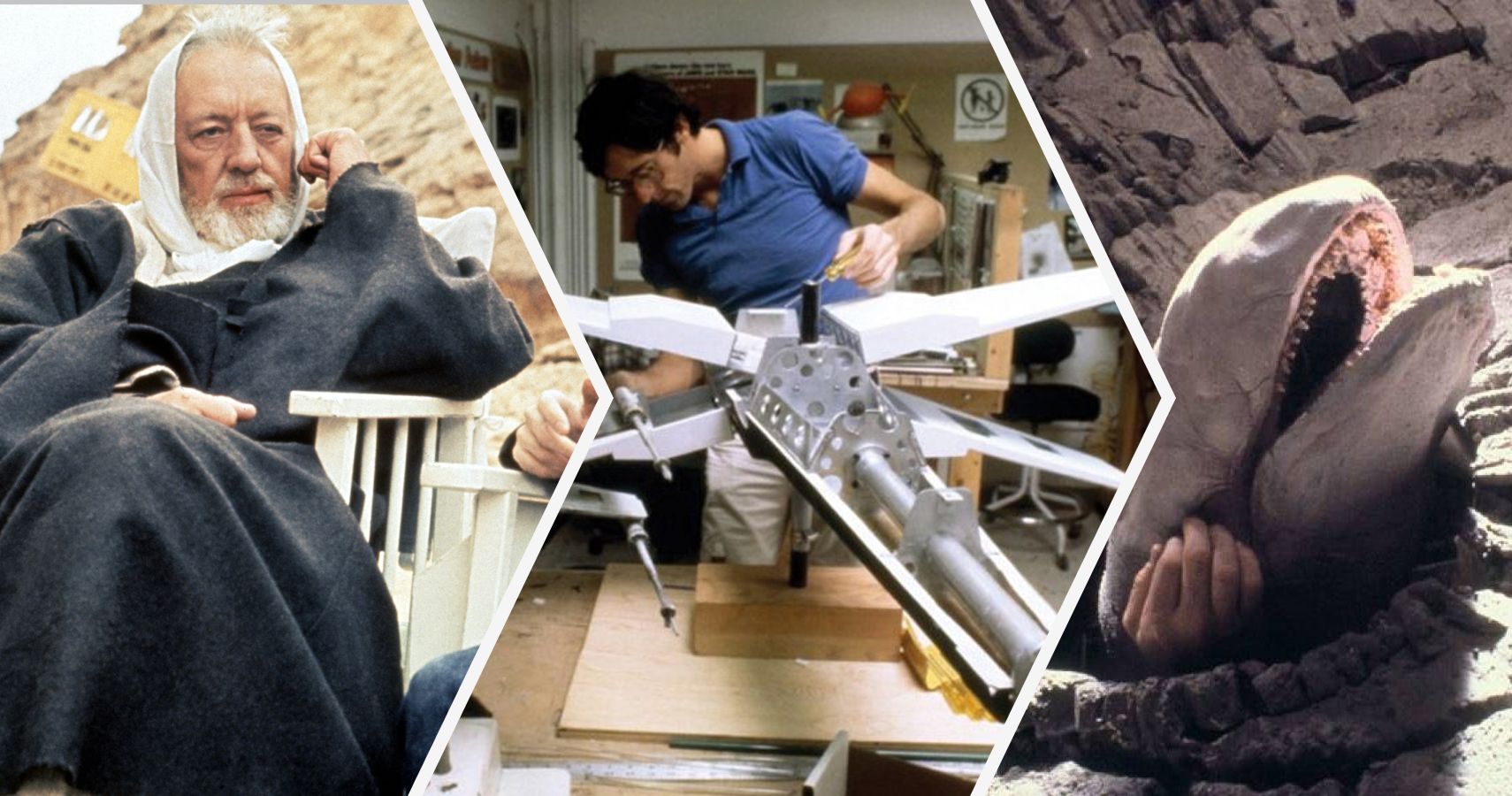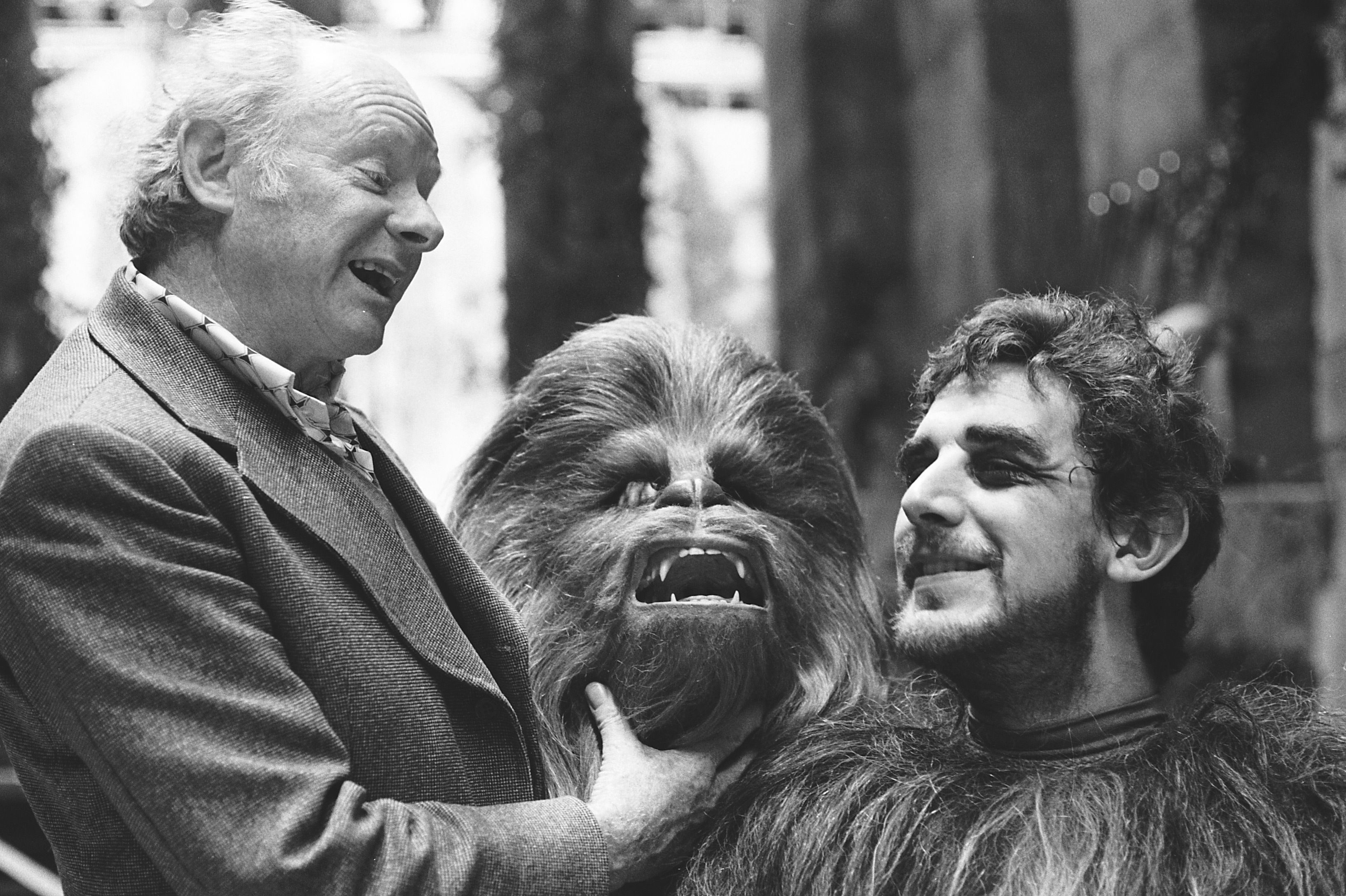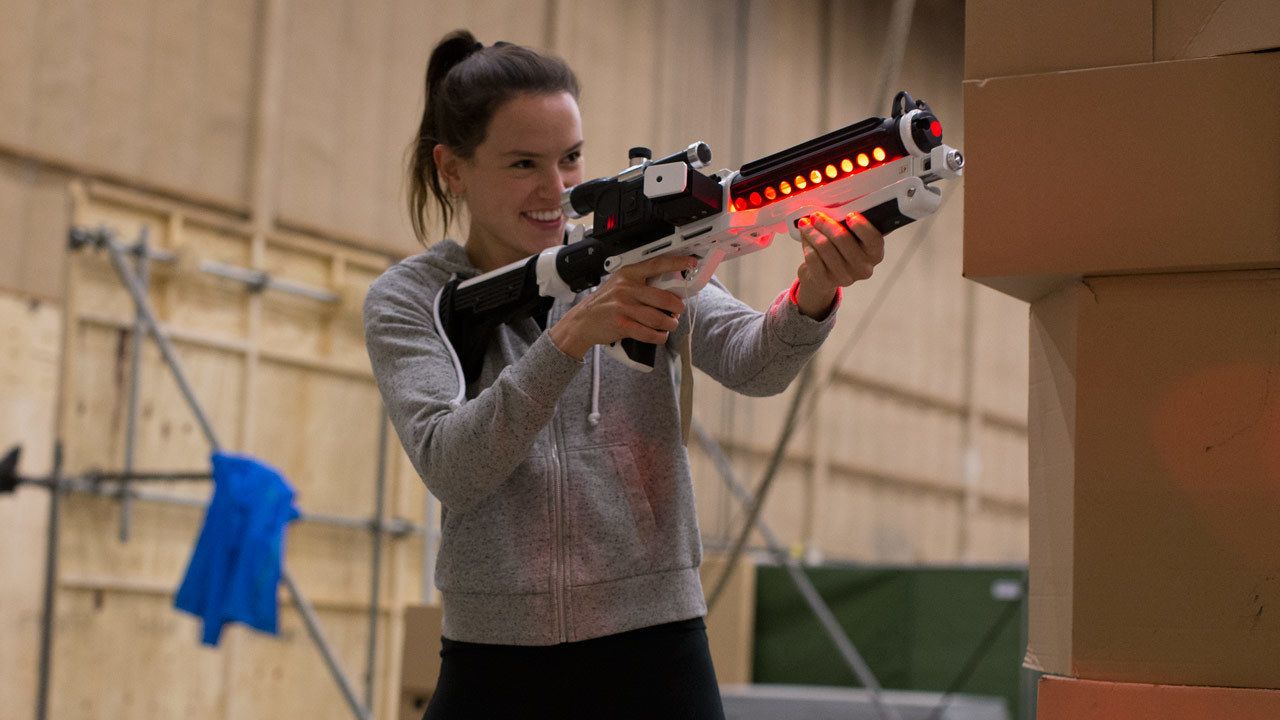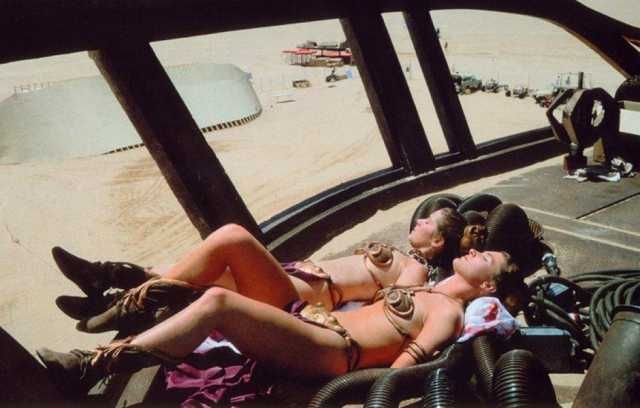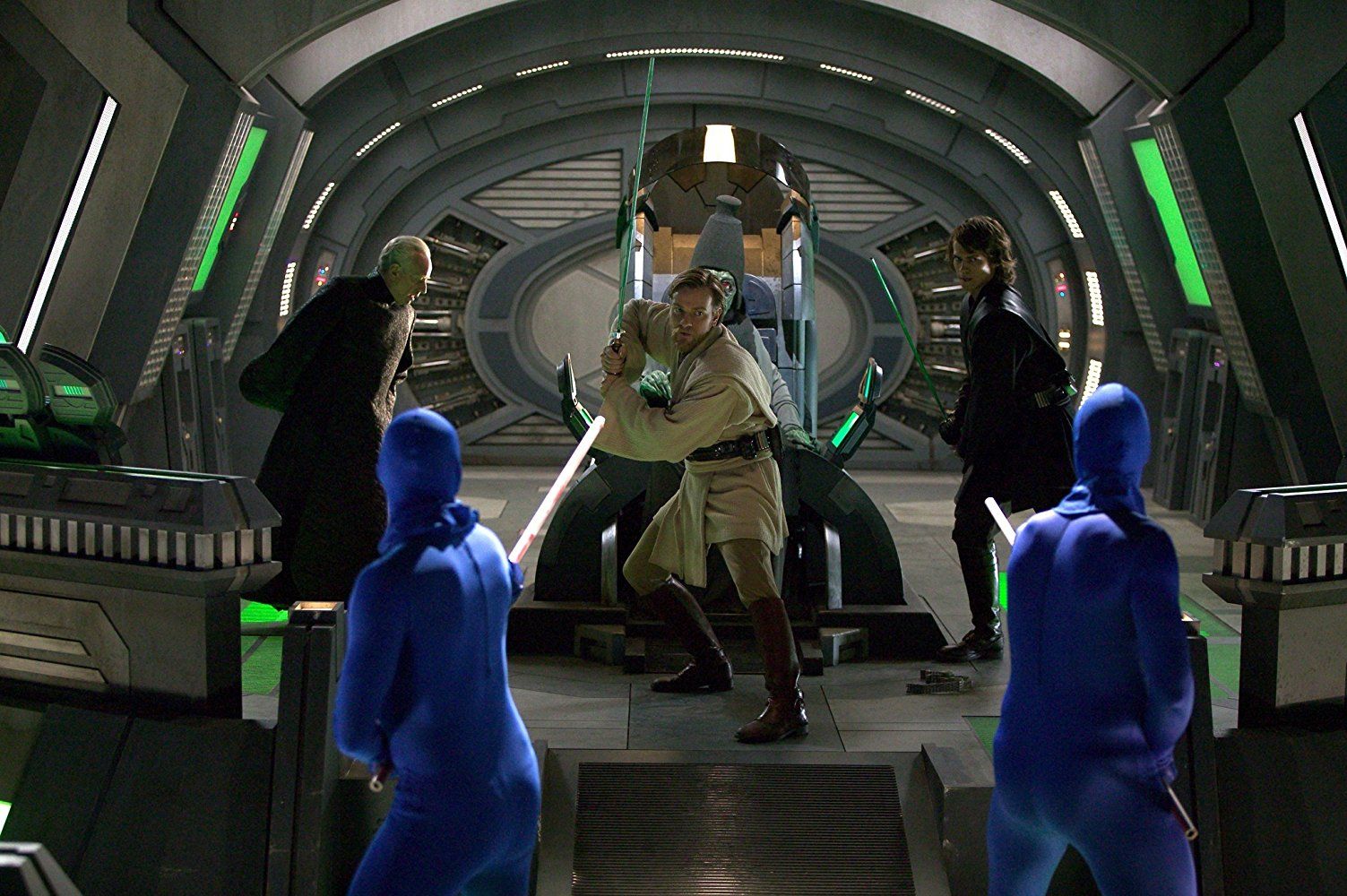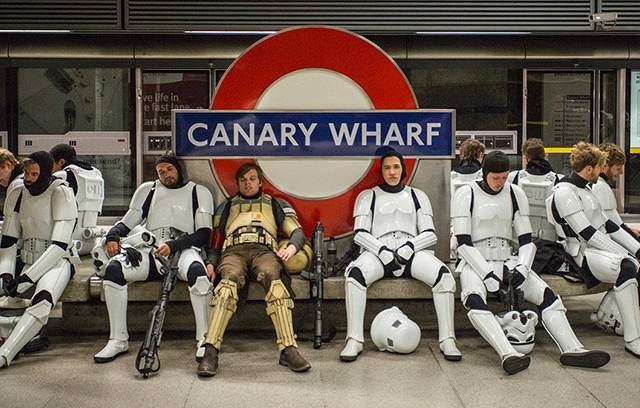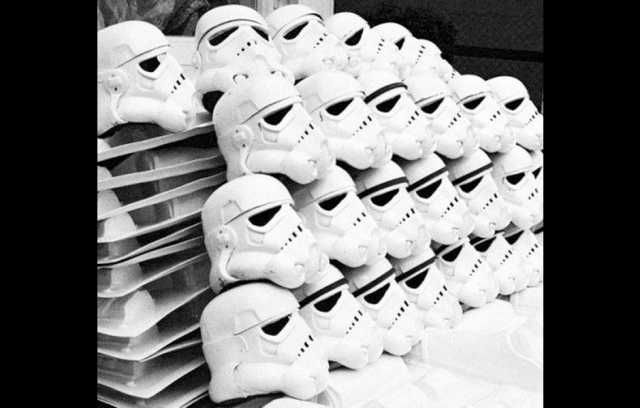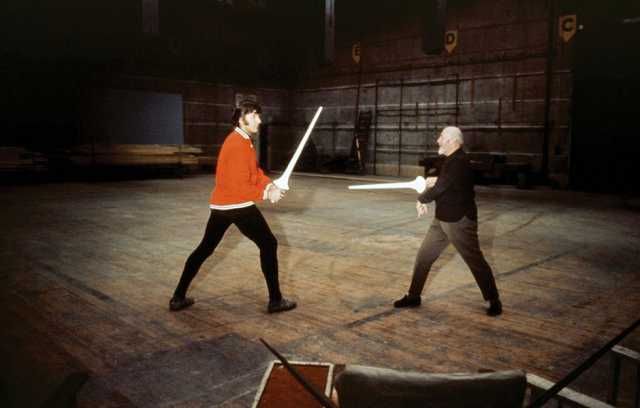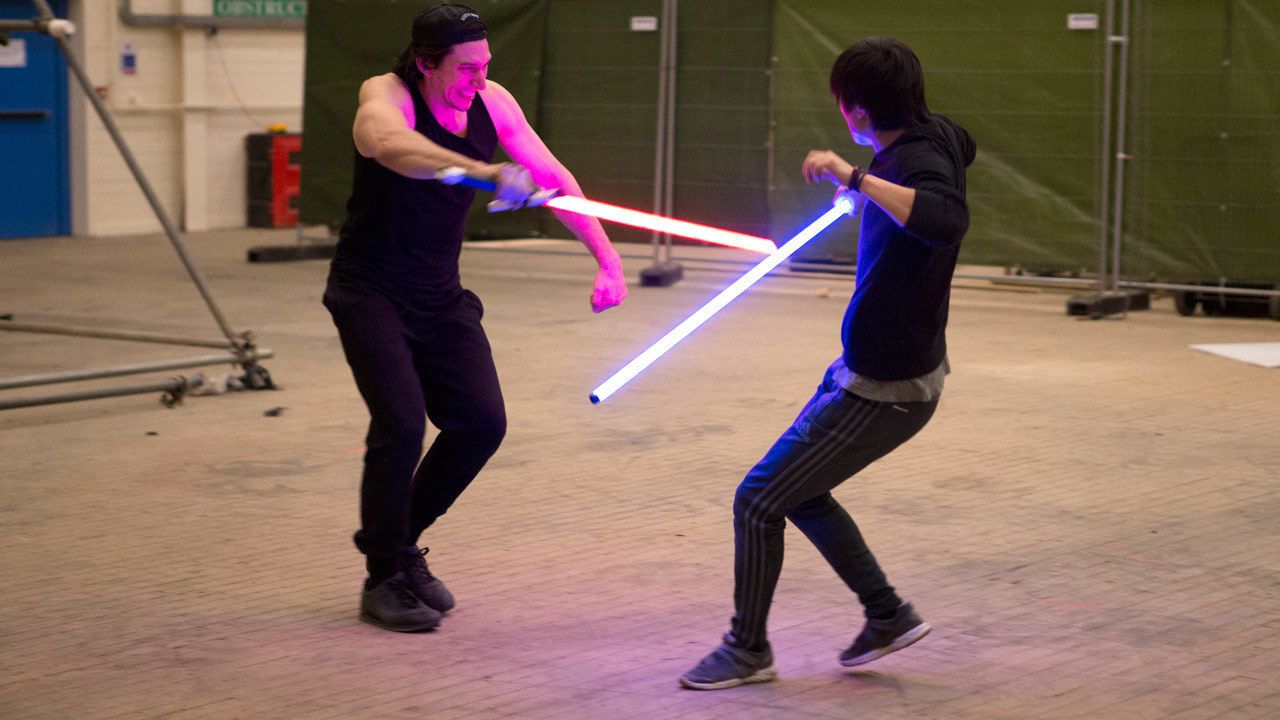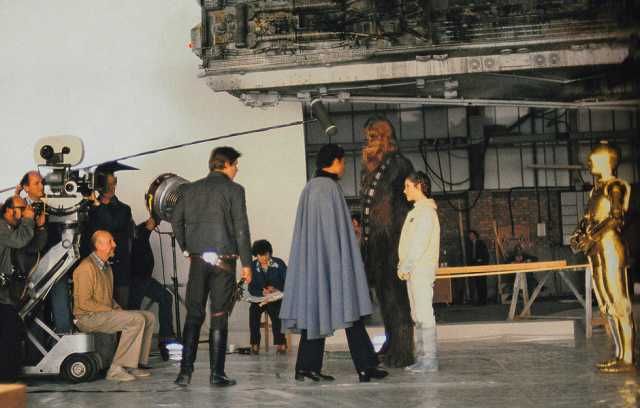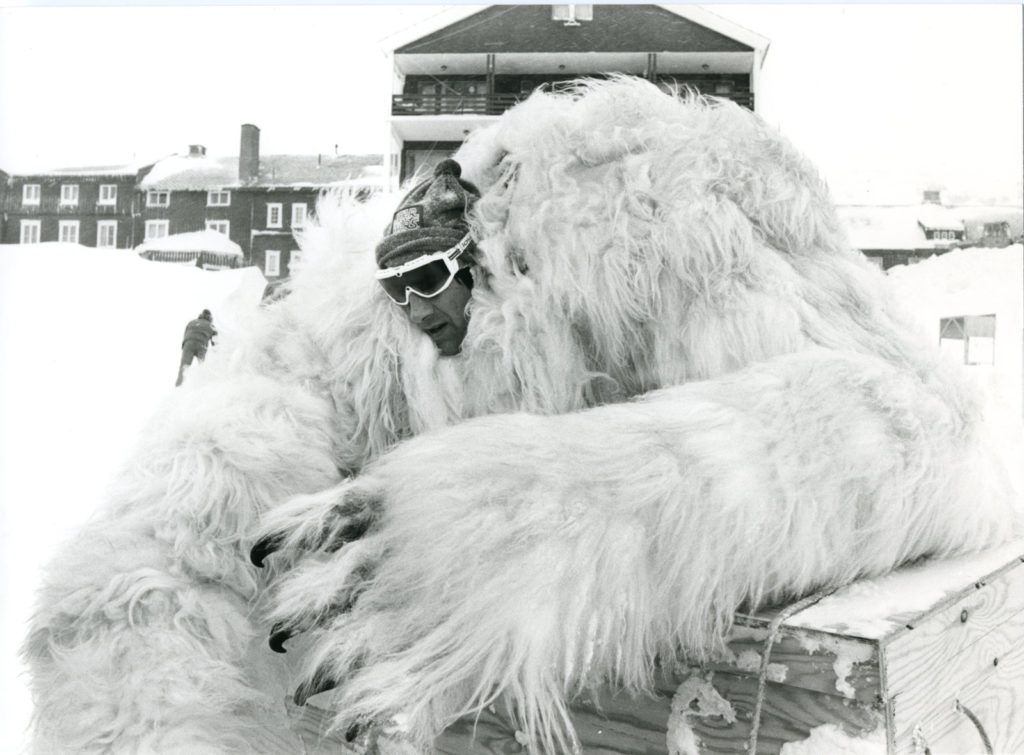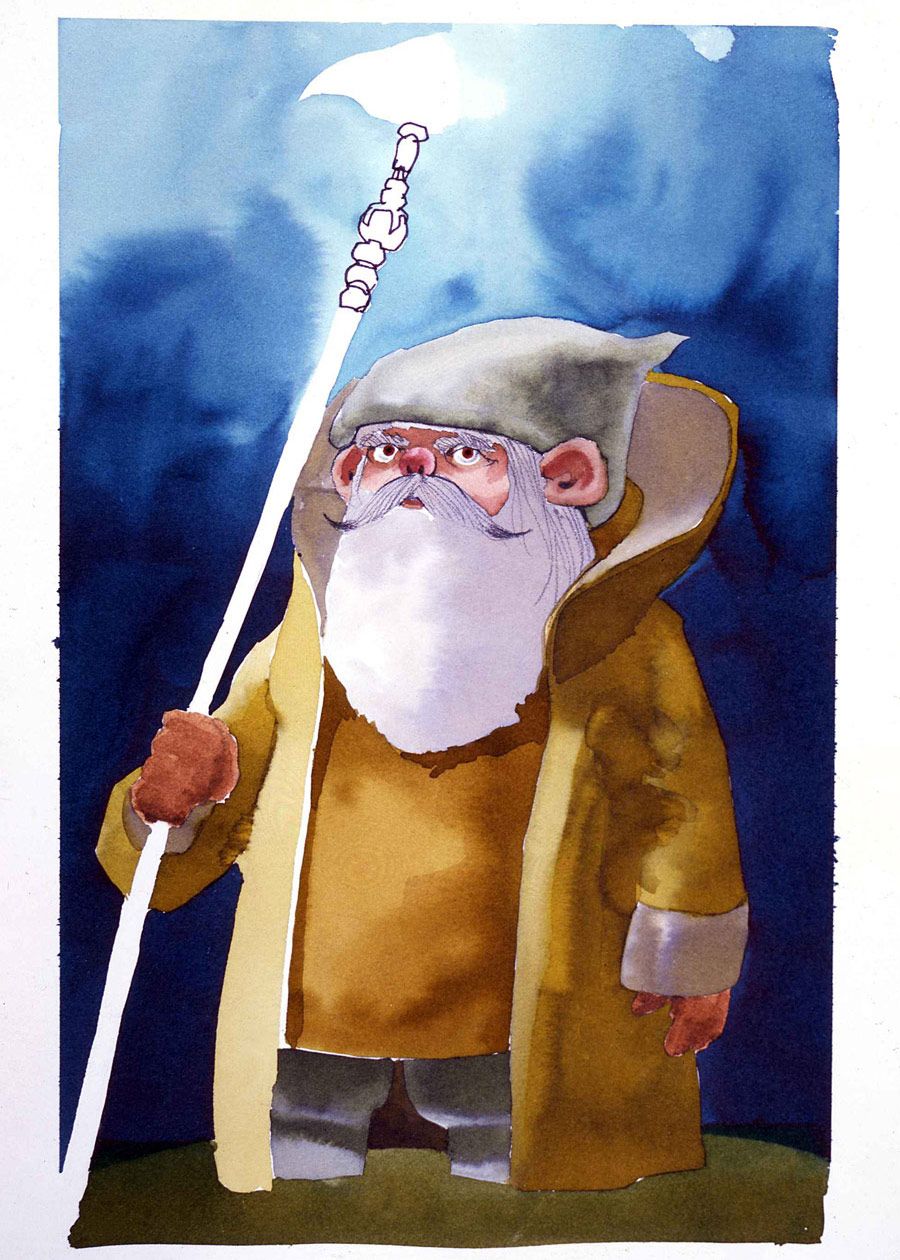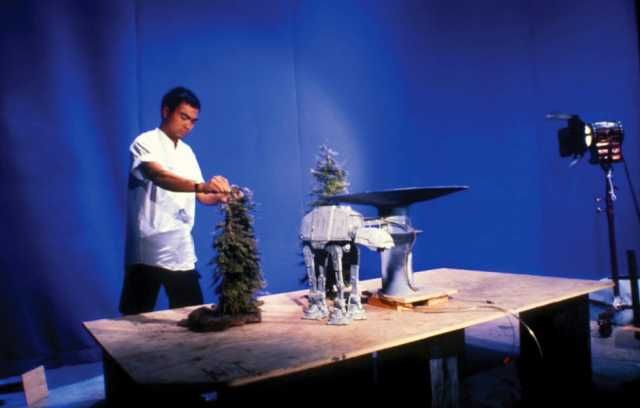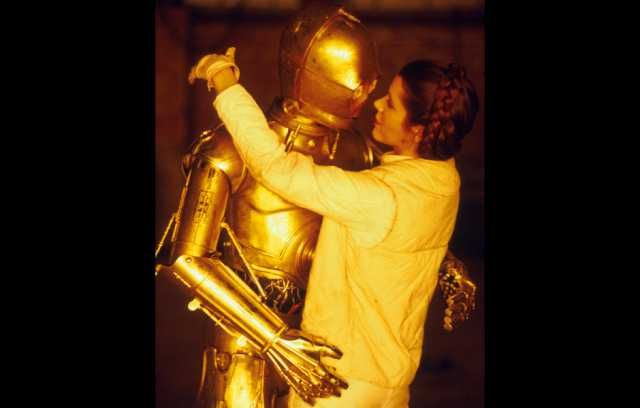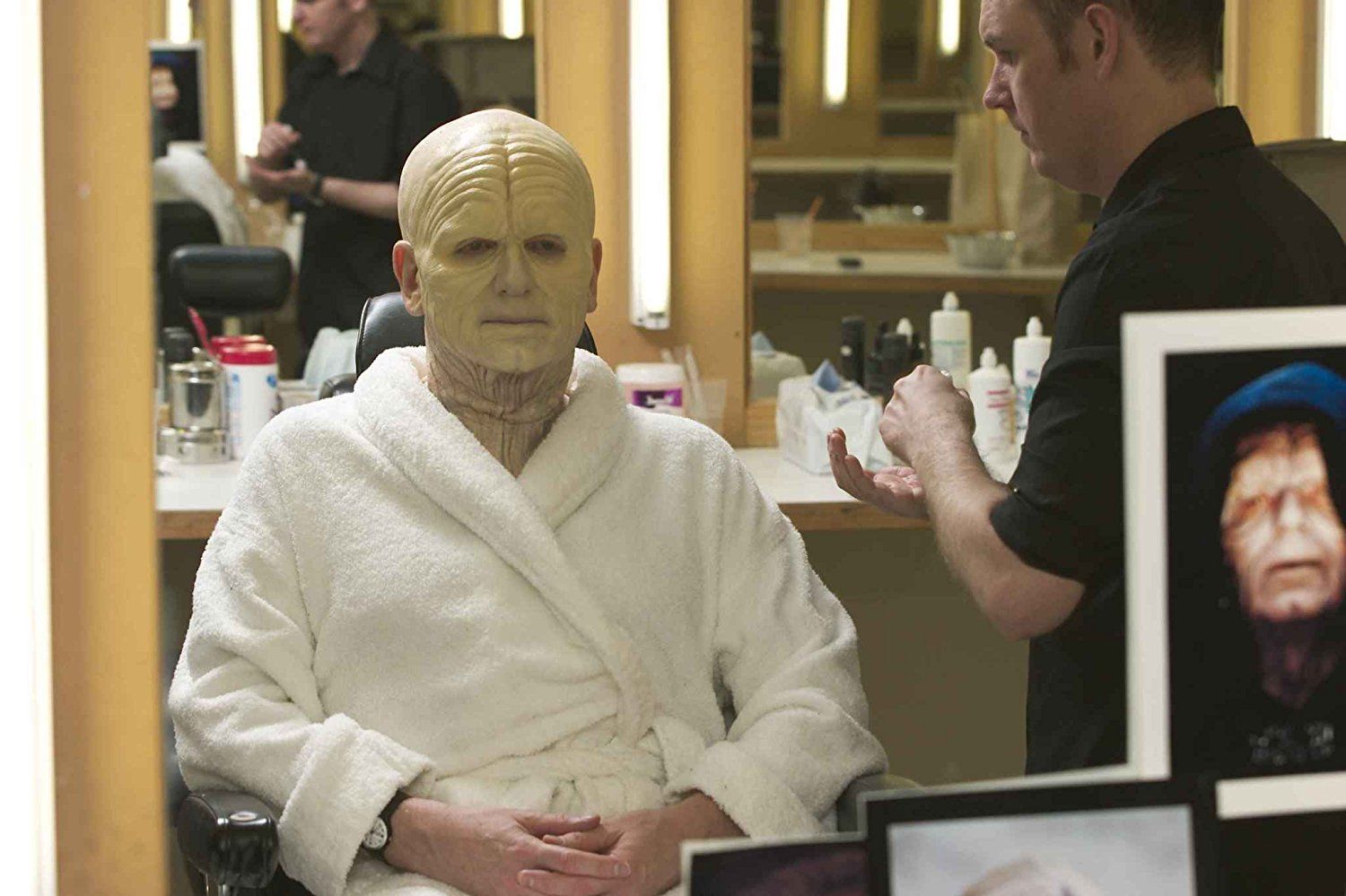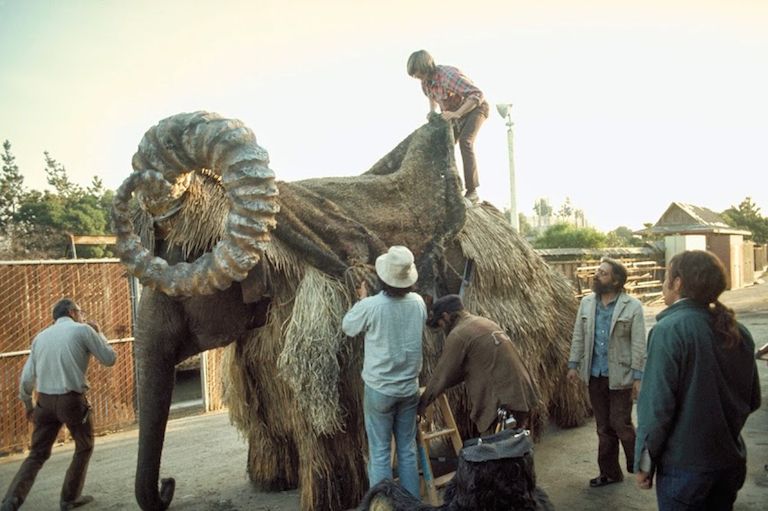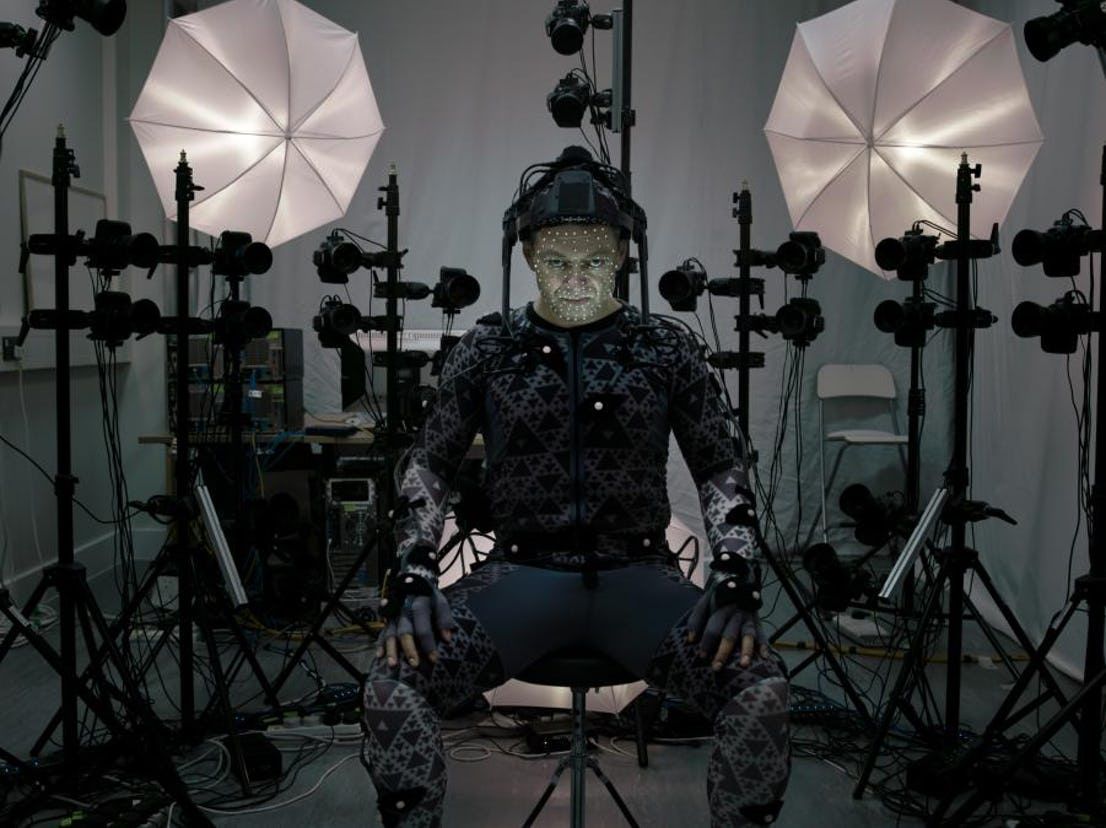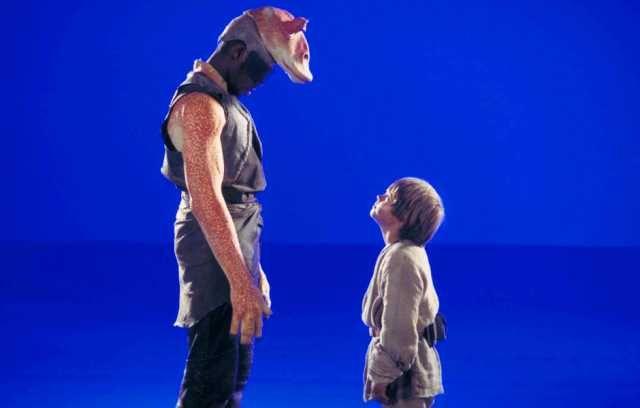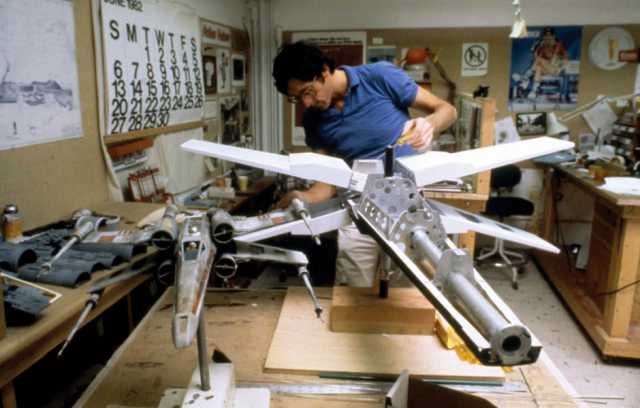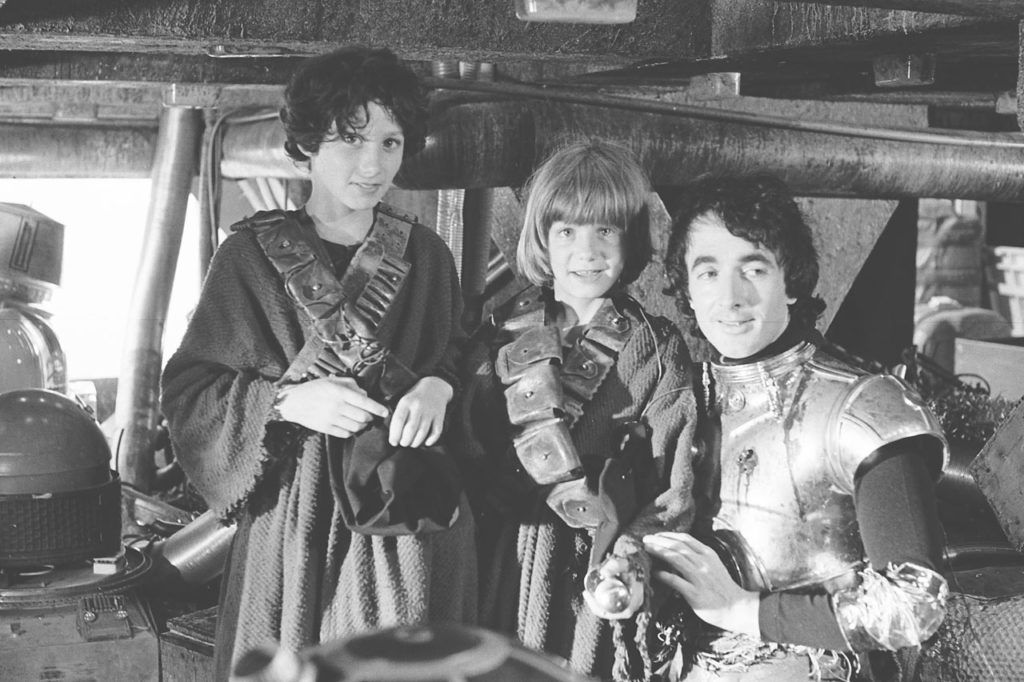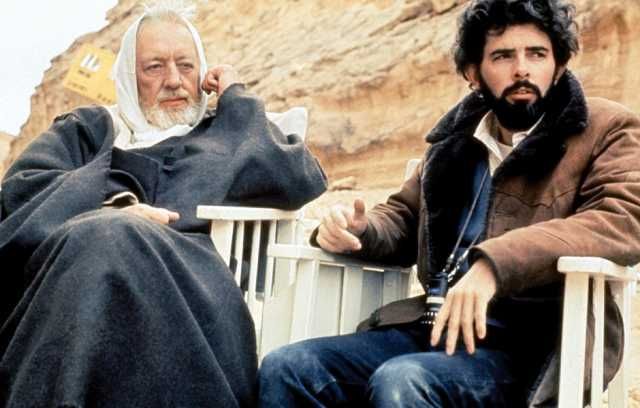It's been more than 40 years and since we first saw the iconic Star Wars opening text crawl. Since the franchise jumped to hyperspace in A New Hope, ten movies have added to the massive universe from the mind of George Lucas. The latest, Solo gives us a look into the history of the franchise's beloved scoundrel.
Like Han himself, the Star Wars cinematic experience has a lot of backstory that isn't always immediately visible. In the decades since the first movies, the franchise has built up a lot of lore. The cast and crew from all the movies shared looks into their lives on set. While the newer movies have kept a lid on behind the scenes snaps to stop spoilers, there is still a wealth of information out there.
Star Wars is a titan of pop culture. It's easy to overlook the challenges that go into making such a spectacle. From tricky practical effects to pioneering CGI, the crew worked hard behind the scenes to bring the galaxy to life. Their hard work has been documented in pictures that show the special effects wizards at work. Meanwhile, photos of the tight-knit casts show the fun and strain of shooting these blockbusters.
Here are 28 photos from behind the scenes that will change the way you watch and rewatch these movies.
PETER MAYHEW PRACTICES CHEWIE'S LINES
With Solo in theaters now, we get to see to the meeting between Han and his furry companion Chewbacca. The giant Wookie has roared and growled his way through the original Star Wars trilogy, made a cameo in Episode III, and looks set to stick around through the sequel trilogy too. And for much of that time, he was played by the 7ft 3in actor Peter Mayhew. In this behind the scenes shot, we see Mayhew and the makeup artist Stuart Freeborn jokingly practice the Wookie's lines. In the movies all we hear from Chewie are the signature roars. On set, though, Mayhew did improvise lines in English for what Chewie meant. This helped the acting feel natural. The roars came later.
Shyriiwook is the combination of four bears, a badger, and more animal noises.
The suit that Stuart Freeborn is playing with here was made of yak hair and rabbit fur. Freeborn was brought in because of his experience working with other hairy primate costumes. His work brought the prehumans of 2001: A Space Odyssey to life. Mayhew's costume was understandably hot, and so for the Revenge of the Sith cameo, it had a built-in cooling system. Photos like this show the great relationships between the actors and the crew working together.
BLAST 'EM
Star Wars has an abundance of futuristic weapons for the cast and crew to work around. The actors and lighting crew have had to imagine the finished product while filming. Sticks stood in for lightsabers in many of the earlier movies. In the original trilogy, the Imperial blasters were fully operational firearms with blank cartridges. Animators would rotoscope over the shots. In the prequel trilogy, too, remixed real firearms are the basis for the various blasters.
In the latest movies, their jobs are a bit easier. This behind the scenes shot of Daisy Ridley shows off a modified Airsoft rifle. It looks very close to the film's F-11D blaster rifle. The new 'blaster' gives off a great kick without ejecting blank cartridges everywhere. The rifle has built-in lights which simulate the timing of the blaster shots. This helps lighting and animation teams to get the feel of the shot just right.
This photo also shows just how much fun the actors have with their props. While filming The Last Jedi, Laura Derne really enjoyed firing a blaster as Admiral Holdo. The only problem was that she couldn't help saying "Pew pew" with every shot. You can still see it if you look closely.
CATCHING THAT TATOOINE SUN
Filming is a long process, with quite a bit of waiting around. When you and your stunt double are already in bikinis, why not use the time to get a tan? Peter Mayhew took this picture of Carrie Fisher and her stunt double Tracey Eddon on set of The Return of the Jedi. The pair made the most of the desert sun and the iconic slave costume for the Jabba's barge sequence.
The movie took the Star Wars franchise back to Tatooine, where Luke began his journey. On the other hand, the film team didn't go back to Tunisia and the location that lent the desert planet its name. The desert scenes for the third instalment of the original trilogy were shot in Buttercup Valley, Arizona.
The bikini is simultaneously an iconic and controversial costume. Fisher once wrote that it might be "what supermodels will eventually wear in the seventh ring of hell." Later, though, she turned the slave outfit into a symbol of her character's power. When asked by a father about a new toy featuring the costume, Carrie Fisher used it as a moment to address the controversy. She advised Fred Hill to tell his daughters "that a giant slug captured me and forced me to wear that stupid outfit, and then I [ended] him because I didn’t like it." She did it with the costume itself.
TAKING ON MEN IN BLUE
In this rare behind the scenes shot from Episode III - The Revenge of the Sith, we see Ewan McGregor as Obi-Wan sizing up the Blue Man Group. The finished version of the scene features the deadly MagnaGuard droids, but behind the scenes they were stuntmen in blue suits. It is quite impressive to see the actors keeping their intensity up.
By the time George Lucas came around to filming the first parts of the Star Wars saga, CGI offered new ways to bring his world to life. The CGI use in the prequels drew a lot of criticism, even though there were many practical effects in the movies. In this photo the line between practical and computer generated environment and effects is evident.
Looks like Obi-Wan isn't a fan of the Blue Man Group.
Despite the criticisms of the prequel's CGI, it offered some design advantages. The MagnaGuard's skeletal design would have been impossible as a practical effect. Lucas had already seen the limits of practical effects in the unfinished C-3P0 of The Phantom Menace. Peter Mayhew simply couldn't be built into the costume as he had been before.
For a sequence like the one in the picture here, CGI gave the team freedom to perform with stuntmen that could be replaced later.
STORMTROOPERS IN THE TUBE
While filing Rogue One, the extras playing the stormtroopers took some time to rest between takes. The Canary Wharf tube station in London was closed off for filming. The sequence shot there featured in the trailer, and many Londoners recognised it immediately. Behind the scenes photos like this proved them right.
The photo strangely humanises the stormtroopers. Seeing them sitting around with their helmets off turns them from faceless space fascists into ordinary working folk on a morning commute.
Director Gareth Edwards began his first TV job in the area and filming there was a bit like coming full circle. When he used to commute there he thought "This is like a sci-fi movie. If I ever get to do a sci-fi film in my life I'm gonna film it here." He also described the night where the station was transformed into a set as a "secret mission".
This isn't the only movie to use Canary Wharf for a location. The tube station also featured in the apocalyptic 28 Days Later, directed by Danny Boyle. Perhaps it is the severe industrial look that appeals to film makers. It certainly worked well as a stand in for the cold and dark Imperial Base.
PILES OF STORMTROOPER SUITS
While the clone troopers of the Prequel trilogy were mainly digital, in the original Star Wars practical costumes were all they had. Here we can see a fraction of the fifty low-detail helmets from A New Hope. Six 'hero' helmets had more detail for close up shots. The faceless white stormtrooper armor is now iconic. There's even a famous cosplay legion, the 501st, that invades conventions everywhere.
The original helmets were not comfortable. Mark Hamill once freaked out while filming the scenes where Luke and Han disguise themselves. "You can see the inside of the helmet and it's all sickly green plus you've got wax in your ears, because of the explosions and you just feel eerie," he remembers. The helmet looks good, but it certainly got in the way.
This might explain the troopers' infamous inability to shoot anyone. It also accounts for one of A New Hope's famous goofs, where a storm trooper hits his head on a door. As they come through a door way looking for C3P0 and the other infiltrators, one of the troopers in the back misjudges the height of the door. In retouched later editions, a little clang was added to turn it from a goof into a feature.
BREAKING THE PROPS
There were two roles that required huge actors for the first Star Wars film. Peter Mayhew picked Chewbacca, and David Prowse got to be the body of the most iconic villain. As Darth Vader, Prowse had to train for the one lightsaber duel in the movie.
The scene itself is fairly tame in comparison to the flips and frantic energy of newer duels. Despite this, Prowse and Sir Alec Guinness had to rehearse with wooden stunt props. In this picture we can see the towering body of Vader bearing down on Guinness in rehearsal.
Practice did not make the scene easier to film, though. Prowse was a powerful man, as a bodybuilder and weightlifter. According to stunt co-ordinator Peter Diamond, he swung the prop with more force than was needed. "Every time they touched swords, the blades kept breaking," said Diamond.
This wasn't the only challenge facing the team regarding David Prowse. Prowse had a thick West Country English accent, while he delivered lines on set Lucas had never intended to use it. Fortunately, he went with the rich voice of James Earl Jones. Documentaries and behind the scenes recordings let us hear how Vader would have sounded as Prowse.
LIGHT UP LIGHTSABERS
Gone are the days of the strange wooden lances used for training in the original trilogy. The colorful sticks for the prequel trilogy are gone too. The march of technology means that for new Star Wars films, lightsaber props feel a lot more like the real thing. Comparing this picture of Adam Driver rehearsing for The Force Awakens, it is amazing to think about how the filmmakers managed before.
These light-up props appeared in a limited form for a single sequence of Attack of the Clones. For Episode VII, the stunt team brought them out in full to help out. A big challenge for the lighting team on set is anticipating the changes from the lightsabers. The new props are highly interactive, allowing the team to make them strobe, move the light up and down, and change color. Shots like this really show how far technology has come.
The special effects teams worked throughout the history of Star Wars to work on the technology of the lightsaber. In the first movie they were a reflective substance that spun on a motor to catch the set lights. These were unreliable and, as we've heard, fragile. For the rest of the movies, carbon and then carbon-fibre rods were used instead. While the carbon-fibre rods didn't break, they did injure many of the actors.
HUNGOVER IN CLOUD CITY
It's not too easy to tell from this behind the scenes shot, but two of the actors filming here for The Empire Strikes Back were under the weather. Carrie Fisher and Harrison Ford went out for a night of partying. The two Star Wars actors met up with Monty Python's Eric Idle and the Rolling Stones. Idle introduced them to a drink called the Tunisian Table Cleaner, as both Star Wars and The Life of Brian were filmed there. The night of revelry left Fisher feeling unwell, delaying the next day's filming.
In spite of this, feelings on set were festive as well and the cast got along very well. Billy Dee Williams, playing the roguish Lando Calrissian, was quite in character. According to Carrie Fisher, he "would say things. I would say them right back. He said something unmentionable when he kissed my hand."
Williams doesn't seem to have needed much getting into character as Lando. Lando's roguishness, down to the "flair" of his name, appealed to the actor. You can see a little of his chemistry with Fisher in this interview where he discusses the character.
Williams has stayed very involved in Star Wars as Lando, and recently gave his support to Donald Glover's portrayal of the character in Solo.
AN ABOMINABLE SNOWMAN SUIT
Bitter cold made filming the Hoth scenes for The Empire Strikes Back a challenge for the cast and crew. One cast member had a surprisingly sweltering time, however. Des Webb was the performer behind the giant yeti-like Wampa. In this shot between takes you can see how the suit totally enveloped him. Naturally, the suit was incredibly stifling for the actor to wear in his scenes as the marauding monster. Ultimately most of his footage was cut in the original release. An entire subplot of the Wampas attacking Echo Base had to be removed.
Who needs a wool coat when you can have a Wampa fur coat.
For the Special Edition, a second suit was built by Industrial Light & Magic artist Howie Weed. Lucas wanted to reshoot some Wampa scenes, and Howie found a way to open the monster's maw into a more fearsome roar. He replaced the shorter Des Webb for these scenes, and recalls an interesting moment. As the Wampa loses an arm to Luke Skywalker, George Lucas wanted Weed to open the mouth wider and wider. "On action I pulled down the jaw as wide as I could, which broke dozens of little elastic bands inside the mask," he said in an interview. The suit was ruined of course, but that last shot was the one Lucas was looking for.
YODA THE GNOME
In a film franchise full of pop culture icons, Yoda still stands out as one of the most memorable Star Wars characters. The little green alien is a fan favorite, with his strange manner of speech making him instantly recognizable. George Lucas created a character to fit a specific folklore archetype in a story deeply influenced by myth and fairytale. The archetype is of a seemingly "insignificant" and powerless creature that reveals itself to be magical. Yoda's introduction on Dagobah certainly fits the bill.
In this piece of early concept for the character we see a very different look for the Jedi master. Instead of the long-eared green alien, Yoda might have been something between Gandalf and a garden gnome. With a bushy beard and a magic staff, this original concept definitely looks more fantasy than sci-fi. As with any creature design, the team iterated upon the idea until they reached the design brought to life by Frank Oz.
An interesting fact came to light thanks to a curator at the British Museum. Julian Harrison posted an image from a Medieval manuscript of a strangely familiar creature dressed as a monk. It isn't clear if this is coincidence, or the strange workings of the Force.
CAUGHT CUTTING TREES
In this behind the scenes photograph from Return of the Jedi, art director Nilo-Rodis Jamero adjusts the miniature trees next to the AT-AT walker. The Endor forest scenes required a lot of miniature trees to be made convincing. Industrial Light & Magic had worked with many mini trees making the forest sequences for E.T. with Steven Spielberg.
Getting the miniatures to look good is quite a process, but for one ILM employee it was tense for a different reason. Working on E.T. taught the team that a certain kind of juniper tree was best for miniature forests. Cameron Noble noticed that a nearby doctor's office had some of these trees, and snuck out at 2 am to get some cuttings.
The police came upon him in the dark cutting bits from the trees. Apparently he told them he was working on the newest Star Wars movie and they let him off. Working on a highly anticipated blockbuster has some perks.
While much of the Endor sequence was done in miniature, numerous scenes were shot in the Redwoods National Park in California. Unfortunately, the location for the bunker scene no longer exists, and logging activities have left many other locations inaccessible.
DROIDS DREAM OF PRINCESSES
This is one of the more famous and funny behind the scenes shots from Star Wars. Carrie Fisher often joined in for jokingly romantic photos, including this one with C-3P0 and others with Peter Mayhew in his Chewie costume.
Photos like these do show the good sense of humour among the cast, which flowed out in tributes after Fisher's passing in 2016.
While this photo is just goofing around on set, Anthony Daniels had some poignant observations when the photo was taken. Daniels got into C-3P0's mindset (or programming) to understand what drives the anxious droid. The actor commented: "I think he's rather disconcerted throughout the film that he's not human." He linked that to things like the kiss the photo suggests. "There are times when he is suddenly pulled up short and I think that slightly upsets him."
This dedication to his character extends to more than just his understanding of the droid's mindset. The actor has played C-3P0 in every film the character features in. He's the only major actor to appear in every Star Wars film, making a cameo in Solo (not as the gold droid, though). He has also done voice work for the many animated series and video games in the franchise, too.
BECOMING THE BAD GUY
Looming over the first six films is the ominous Emperor Palpatine. The Emperor makes no appearance in Episode IV, but he is mentioned a few times. Then we got a glimpse of him as a hologram, played by Clive Revill. From Return of the Jedi onwards, he would be played on screen by Ian McDiarmid. After the Emperor's demise in Episode VI, we were able to watch his scheming rise to power in the prequels. In 2004, Lucas substituted his performance to the first appearance of the Emperor in The Empire Strikes Back.
Throughout these appearances, Ian McDiarmid steals the scene whenever he is onscreen. The actor can go from cackling evil to underhanded artificial kindness with ease.
In this shot from makeup on Revenge of the Sith, we get to see the process of turning the phony kindness of the Chancellor into the scarred and aged face of the original trilogy's Emperor. It is a moment that had to pay off the foreshadowing that began in Episode I. The picture gives a great look into the effort that goes into the makeup. You can even see a still from Episode VI stuck to the mirror as a reference.
Even more importantly, it gives us an idea of what the Emperor does in his downtime, lounging around in a bathrobe.
THE GIANT SECRET BEHIND BANTHAS
Before Lucas or any other director could pop any strange creature onscreen with CGI, creating giant creatures like the Banthas on Tatooine posed some real difficulties. Stop motion models worked fine for the clanky mechanical walkers of the Empire. For living creatures, though, another approach would have to work. For the shaggy giant ram-like Banthas, the team brought in Mardji, an Indian elephant.
The twenty-five year old elephant came from California's Marine World Africa USA and she was taken to shoot on location in the heat of Death Valley. There, Mardji had to put on the huge hairy costume. Just like many of the human actors, Madji found her suit far too hot in the sun. She kept trying to remove part of it, and she delayed shooting many times.
The other large creature featured in Episode IV is the dewback. Giant lizard creatures were harder to as costumes do than the wooly banthas. The effects team created life size animatronic versions of the creatures for their shots. Mark Hamill climbed inside one during filming, and read a review of a David Bowie concert stuck inside it.
SUPREME LEADER OF MOTION CAPTURE
The Force Awakens introduced Supreme Leader Snoke, who looked poised to take the mantle of looming foe from the fallen Emperor Palpatine. His skeletal face, pockmarked with scars, made a strong impression on audiences. It also required someone skilled in motion capture to bring the CGI villain to life.
Andy Serkis could easily claim the title of cinema's Supreme Leader of motion capture. His performances as Smeagol/Gollum in The Lord of the Rings and as Caesar in the new Planet of the Apes films cemented him as the master. No-one was surprised to see him in the motion capture studio for the role of Snoke in The Force Awakens and his surprising end in The Last Jedi. But, there are rumours and theories that Serkis may reprise the role for Episode IX.
Serkis' performance as the malevolent and manipulative Supreme Leader was certainly memorable. It was sad to see him go.
Seeing Serkis in the stripped down and strange motion capture sound stage shows how much of a performer he is. He has a phenomenal intensity that overcomes the comical geometric wetsuit-like motion capture outfit. In fact, this photo looks almost as if it could come out of any science fiction movie on its own.
BLUE SCREEN OF DOOM
Two of the biggest gripes among fans at the opening of The Phantom Menace were the clumsy Gungan Jar Jar Binks and Jake Lloyd's appearance as a very young Anakin Skywalker. In 2017 Mark Hamill said he was "still angry about the way [so-called fans] treated Jake Lloyd."
Ahmed Best, who played Jar Jar, has also spoken out about it: "Fortunately, I was in my 20s. I wasn't eight years-old like Jake, who I think took it worse. Jake had it far worse than me. I'm a 20-year-old from the Bronx." It's a powerful reminder that the cast and crew are still people.
Beyond showing sources of some of the prequel's biggest criticisms, this picture is an interesting glimpse into the significant CGI in the prequels. While many of the scenes did have practical effects, some like this were almost entirely computer generated. Ahmed Best was significantly shorter than the alien. To help young Lloyd and the other actors, he would wear this Jar Jar helmet to guide their performances.
Fans have since changed their views a little, with a popular fan theory suggesting Jar Jar may have been a secret Sith lord. Best mysteriously confirmed on Twitter and in interviews that some of the theory was accurate, but he might've been messing around. He also revealed that Michael Jackson had wanted the part done in prosthetics, but Lucas wanted to have Jar Jar as the first CGI lead in Star Wars.
BUILDING PROPS FOR CUT SHOTS
The original trilogy required countless models and other practical props to be painstakingly created. On the sometimes tight budgets, the ILM teams had to get very creative with perspective and cardboard to save time and money on model making. But for showpiece shots, they had to build impressive models. Some of these detailed miniatures include a large speeder bike for the chases on Endor, and a large styrofoam AT-ST that was crushed between tiny lead-filled logs during the battle with the Ewoks.
If any models required great details, they were the famous Rebel X-Wings. For A New Hope, the team created one full size X-Wing and many miniatures. They all had reflective glass cockpits for realistic lighting, and were built around surgical tubing to allow electrical connectors to the wing motors.
In this photograph of the prop workshop, we see Paul Huston working on a giant model X-Wing. The four-foot model under construction was required for a shot that would have pushed the boundaries of its day. George Lucas wanted the camera to swing in on a closeup of Luke's face in a dogfight for Return of the Jedi. ILM's Mike Fulmer and Ira Keeler worked on this model in their spare time, and even created a pilot model that was motorised. Sadly, the final shot using this model was never used.
UNDER THE JAWA HOODS
Jake Lloyd was far from the first child actor on set for the Star Wars franchise. Because the movies require such a wide variety of shapes and sizes for aliens, children often came in to act the more diminutive alien species. A New Hope's first act features the tiny, brown cloaked Jawas of Tatooine. These little aliens travel the deserts in their titanic Sand Crawler.
Interestingly, there has never been a canonical look beneath the hood of a Jawa. In every incarnation, the closest we get is seeing their glowing yellow eyes. Behind the scenes, of course, there were photos of the children who took on the role. One of the Jawas, named Datcha in the script, was played by the daughter of producer Gary Kurtz.
In an early concept, George Lucas envisioned the Jawas as ratlike creatures.
He decided against this and instead went with the idea of covering their faces with black stockings and using lightbulbs for their glowing eyes. Another small alien species, the controversially cute Ewoks of Return of the Jedi, also had a child actor in a major role. Many of the Ewoks were played by adult actors with dwarfism. A young Warick Davis, 11 years old at the time, played the friendly Wicket after the adult actor fell sick.
AN UNIMPRESSED SIR ALEC
George Lucas and Sir Alex Guinness had a famously troubled relationship in the filming of the original Star Wars movie. Pictured here together on set in Tunisia, the energy in this picture is different from the close relationships between other cast members.
According to Empire Magazine, it was around the time this picture was taken that the distinguished British actor learned that his character was going to fall in battle with Vader. Guinness wasn't happy with the director's plan and Lucas had to talk the actor round over lunch in London. This wasn't the only strain on the relationship.
A letter written by Guinness during filming was posted onto Reddit and it gives insight into the actor's frustration. In it he complains about "rubbish dialogue" that did nothing "to [make] my character clear or even bearable". In a 1999 interview, however, Guinness claimed the death of Kenobi was his own idea, suggesting Obi-Wan would seem more mystical as a ghost. During the interview he dismissed the lore-filled dialogue he had to deliver as "mumbo-jumbo."
The actor would go on to dislike his fame and adoration as the embodiment of Jedi virtue. He included an anecdote in his memoir that villainized himself for telling a young fan to promise not to watch Star Wars again. The whole story here is worth reading.

